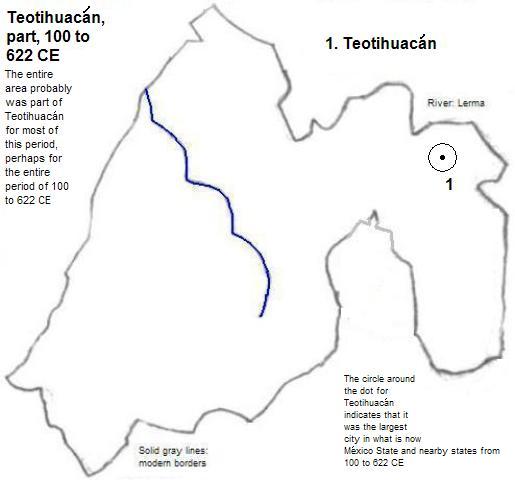
| To Duval Family Home Page | North America | |
| To Chris Home Page | Hispano-America | |
| To Earth (Geography Home Page) | México | West Central Mexico |
Teotihuacán was the center of a state that extended over much of present day México and further south. Its ruins are a World Heritage Site. The remains line the Avenue of the Dead and include the Pyramids of the Sun, the Moon and Quezalcoatl, and temples to Quezalmariposa, Jaguars and Yayahuala. Its early development included contributions from the Cuicuilco culture, with immigrants to Teotihuacán probably fleeing the volcananic erruptions near the older city. Internal strife contributed to Teotihuacán's decline.
| Year | Population | Political entity |
| 100 CE | 45,000 | Teotihuaán |
| 361 CE | 90,000 | Teotihuaán |
| 500 CE | 125,000 | Teotihuaán |
| 622 CE | 60,000 | Teotihuaán |
Pyramid of the Moon seen from the Pyramid of the Sun, Teotihuacán
